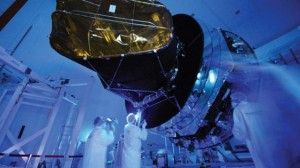Have you ever considered that your hands could be a source to produce electricity? With materials called Peltier tiles, you can actually create products that are powered by the energy from your hand. Peltier tiles rely on the thermoelectric effect. When one side of a material is hotter than the other, the temperature difference can be used to generate a voltage. With a temperature gradient produced, charge flows from the hot to the cold side.

The Peltier effect. Source: Wikimedia commons
Remarkably, Ann Makosinski from Victoria was able to use Peltier tiles to create a hand powered flashlight. In her design, she used a hollow aluminum tube and embedded Peltier tiles into the material as the base of her flashlight. She created a temperature difference by heating the outside of the material with the palm of her hand and cool the inside of the tube with an internal air system. Her flashlight was able to turn on in the absence of light just by placing her hand over the flashlight.
A flashlight courtesy of Mrmariokartguy from Wikimedia Commons
The importance of this technology is significant. We don’t always have a set of batteries lying around and in the event of an emergency, a hand powered flashlight would be extremely useful. Here is a video from Ann Makowsinski describing her flashlight:

Video courtesy from the user: Queenie Andini
Pacemakers are now using this technology. A chip is inserted into the body that requires a 2 degree difference in temperature difference to run. Dinesh Bhatia and her colleagues from the Journal of Pharmacy and Bioallied Sciences have found that areas just under the skin can cause a temperature difference by 5 degrees Celsius. With the use of the thermoelectric effect, we won’t have to perform surgeries just to replace the batteries of a pacemaker.
The problem with this technology is that it may not be able to generate a lot of electricity. If we could find a way to overcome this, it would be a revolutionary change to the products we can produce.






















